UT’s Trash Becomes Treasure at the Surplus REuse Store
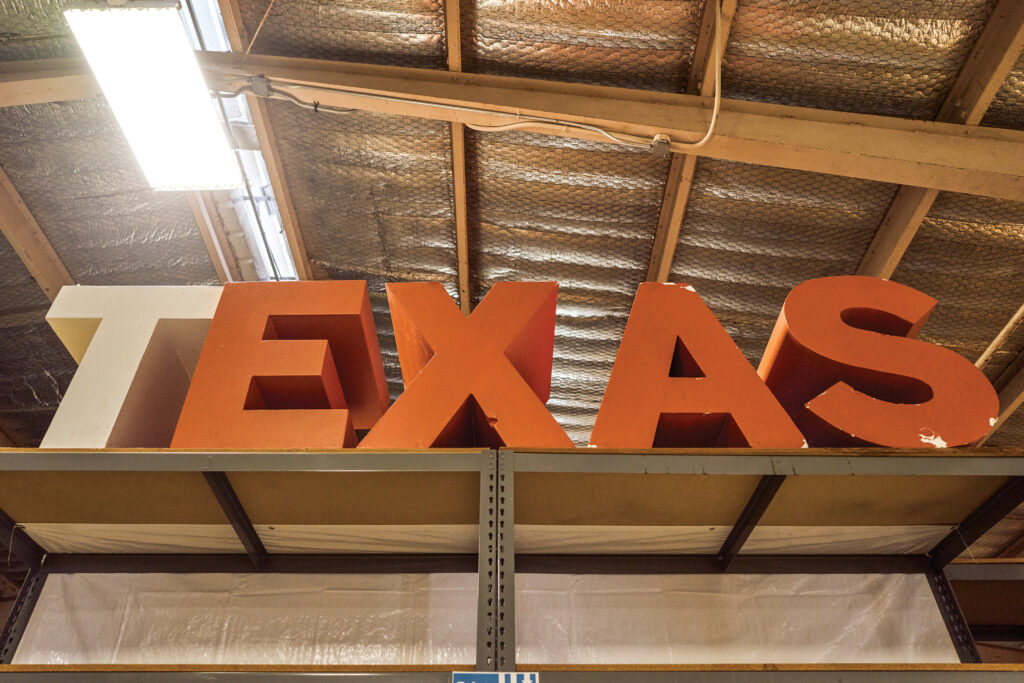
When Bibi Macias, a senior Economics and Sustainability Studies major, walks into her internship, she is greeted by a headless wrestler mannequin, fittingly bedecked in a cape and spandex pants. It’s one of the few constants in the nondescript warehouse where she spends her days sorting, pricing, and ultimately selling the surplus resources of UT Austin. Hundreds of disparate wares may pass through her hands each month, including rare midcentury furniture, vintage Longhorn T-shirts, and even the “Make it Your Texas” letters that recently stood in front of the Tower. Thanks to the staff, including Macias, 10 to 11 tons of these University items are diverted from landfills every month.
“We’re such a small team for how many items are being moved through and reused,” Macias says. “It’s really exciting to know that it’s going to someone who’s really going to appreciate it and give it a new life.”
Macias is one of four interns staffed at the UT Surplus REuse Store, a facility at the J.J. Pickle Research Campus that houses unused items from across university departments. The store is open to the public twice a week, from 3 to 7 p.m. on Thursdays and 8 a.m. to noon on Saturdays, giving students and Austinites alike the opportunity to salvage old materials and minimize university waste.
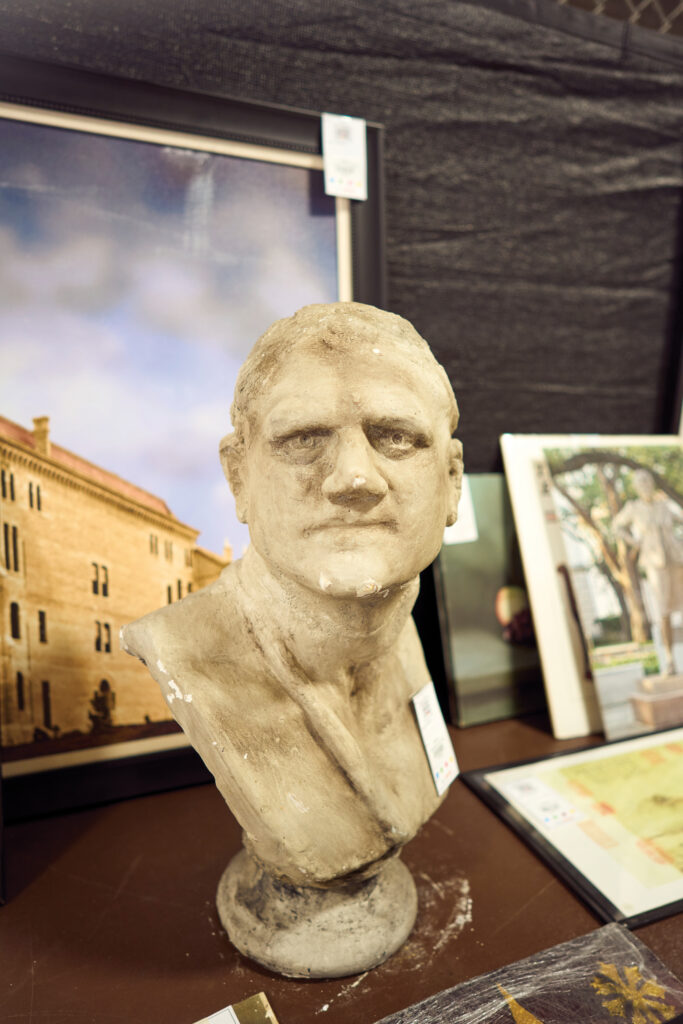
The store serves as the community-facing branch of UT’s Resource Recovery division, which stewards the efficient reuse and redistribution of campus materials through a number of surplus properties and zero waste initiatives, explains Resource Recovery Manager Mark Engelman. Previously, items were only made available to the public through auctions, so the storefront was proposed in 2017 to expand access and reuse potential.
“We started with two test stores,” Engelman says. “The whole purpose of that was to see if there was an interest in this type of operation.”
Engelman says this first iteration of the store showed promising attendance and sales numbers, so it became a permanent fixture in March 2018. Today, the store is bustling, with an average of 150 attendees every day it’s open. And although the staff is small—there are only three full-time employees alongside the year-long student interns—they cultivate a lively atmosphere for customers.
“The culture in the store is really fun,” Macias says. Shoppers can often be heard humming along to the upbeat mix of throwback tunes that the staff plays throughout the warehouse. There’s even a campy Darwin painting by the door, where people can stick their head in and take a commemorative photo. But Macias says the best part of her job is seeing customers sift through the store’s eclectic display of items to find their perfect match—a direct illustration of her role in turning trash to treasure.
“When you think about sustainability … it’s such a big problem, so you wonder how one individual can make an impact,” Macias says. “But in reality, you really can because these systems are in place.”
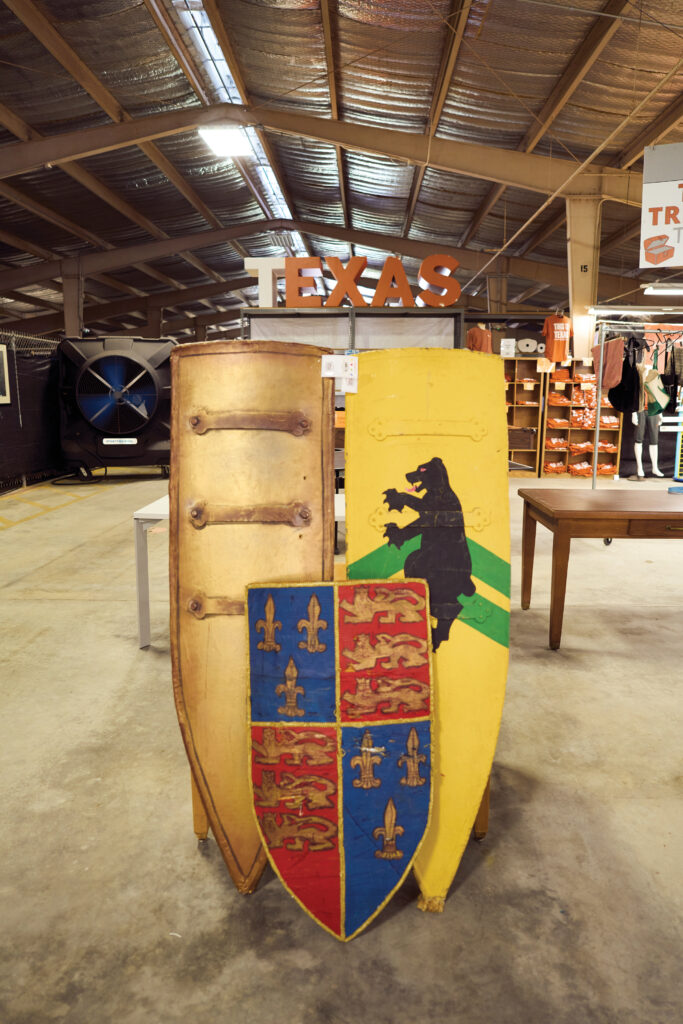
Interns like Macias are responsible for doing waste audits to determine how much waste is being generated by the university in terms of weight, and how much is being reused in pursuit of UT’s Zero Waste goal. The goal was first outlined in the 2016 Sustainability Master Plan, which aims to achieve 90 percent diversion of university waste by 2030.
“That means we want to keep 90 percent of the material that we generate on campus, out of the landfill,” says Lindsey Hutchison, BS ’07, the senior Zero Waste coordinator at UT.
Hutchison says the university as a whole is still far from achieving this goal (the 2021–22 Fiscal Year diversion rate for campus was only 30 percent), but Resource Recovery is a consistent “bright spot,” with surplus properties hovering around 90 percent diversion each year.
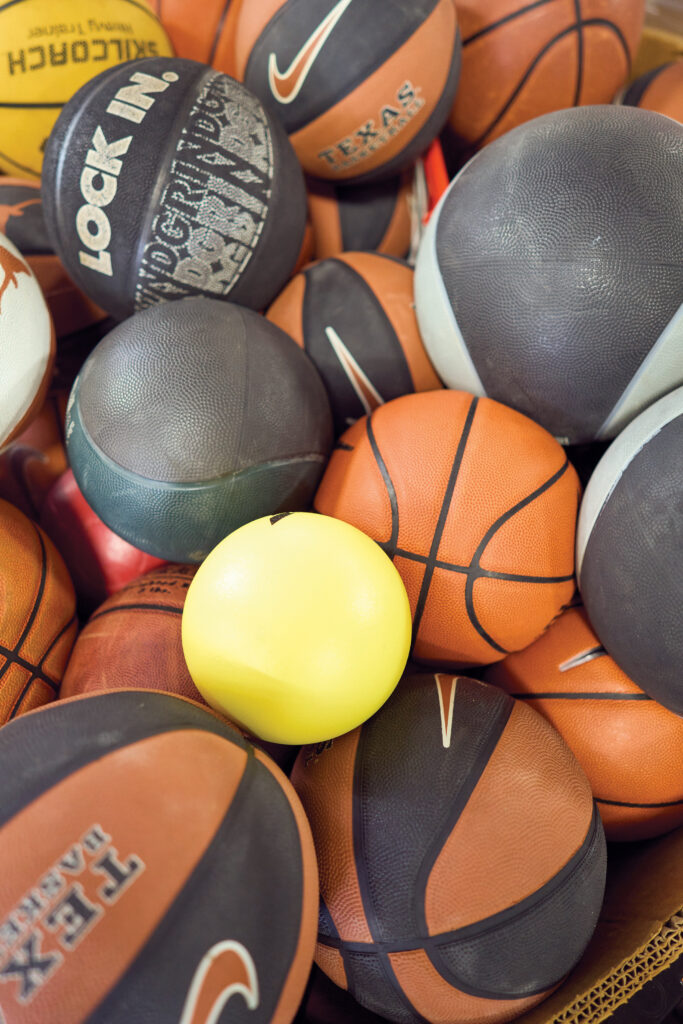
Resource Recovery’s surplus properties intake an average of 700 tons of material from across UT departments annually, Hutchison says. These items are first offered to UT faculty and staff, Texas Independent School Districts, and eligible nonprofits at no cost. Whatever goes unclaimed is then sent to the store or listed online for auction. Items in the store are gradually marked down each month, reaching the price of only $1 after four months on the shelves. Engelman says if items still do not sell, they are typically donated to Goodwill or recycled.
“On average … that’s about 630 tons that are kept out of landfills,” Hutchison says. “If a sofa is about 350 pounds, that’s like keeping 4,000 sofas out of the landfill each year.”
Instead, those hypothetical sofas go back into the community. Macias says students in particular can benefit from low prices on class materials and potential apartment furnishings. She’s personally purchased several oddities including a heart-shaped metal tray for her living room and an old Twilight screenplay. She speculates that some of the most interesting things in the store come from the performing arts department, which has an abundance of quirky props and handmade art.
“There’s definitely some stuff where we’re just like, ‘Where did this even come from?’” Macias says. “That’s kind of the fun of it: the mystery behind the items.”
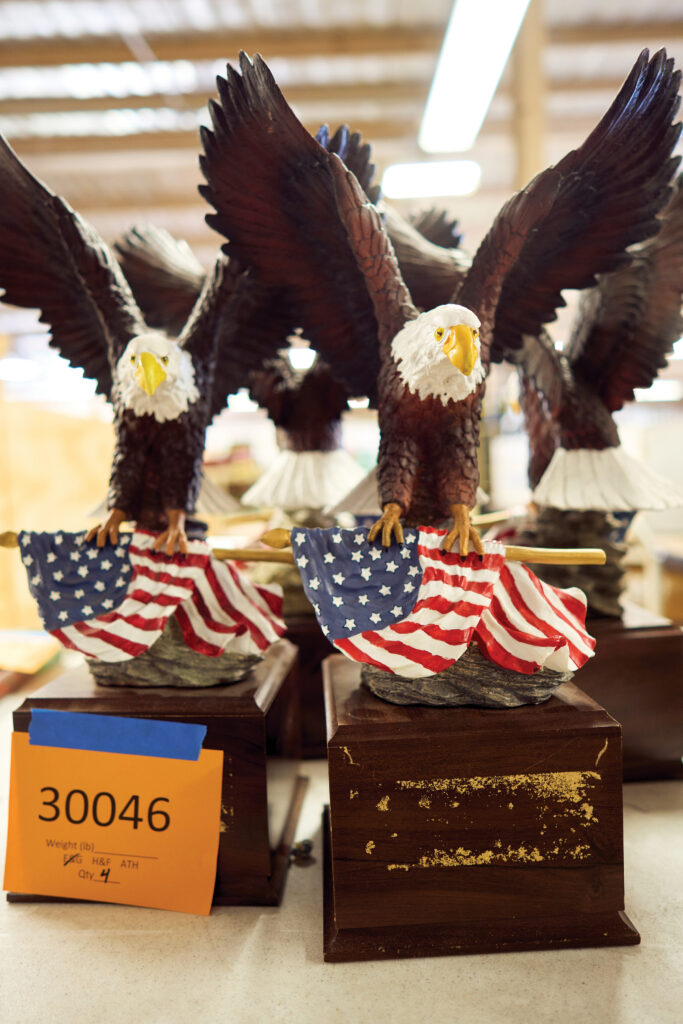
CREDITS: Matt Wright-Steel














No comments
Be the first one to leave a comment.